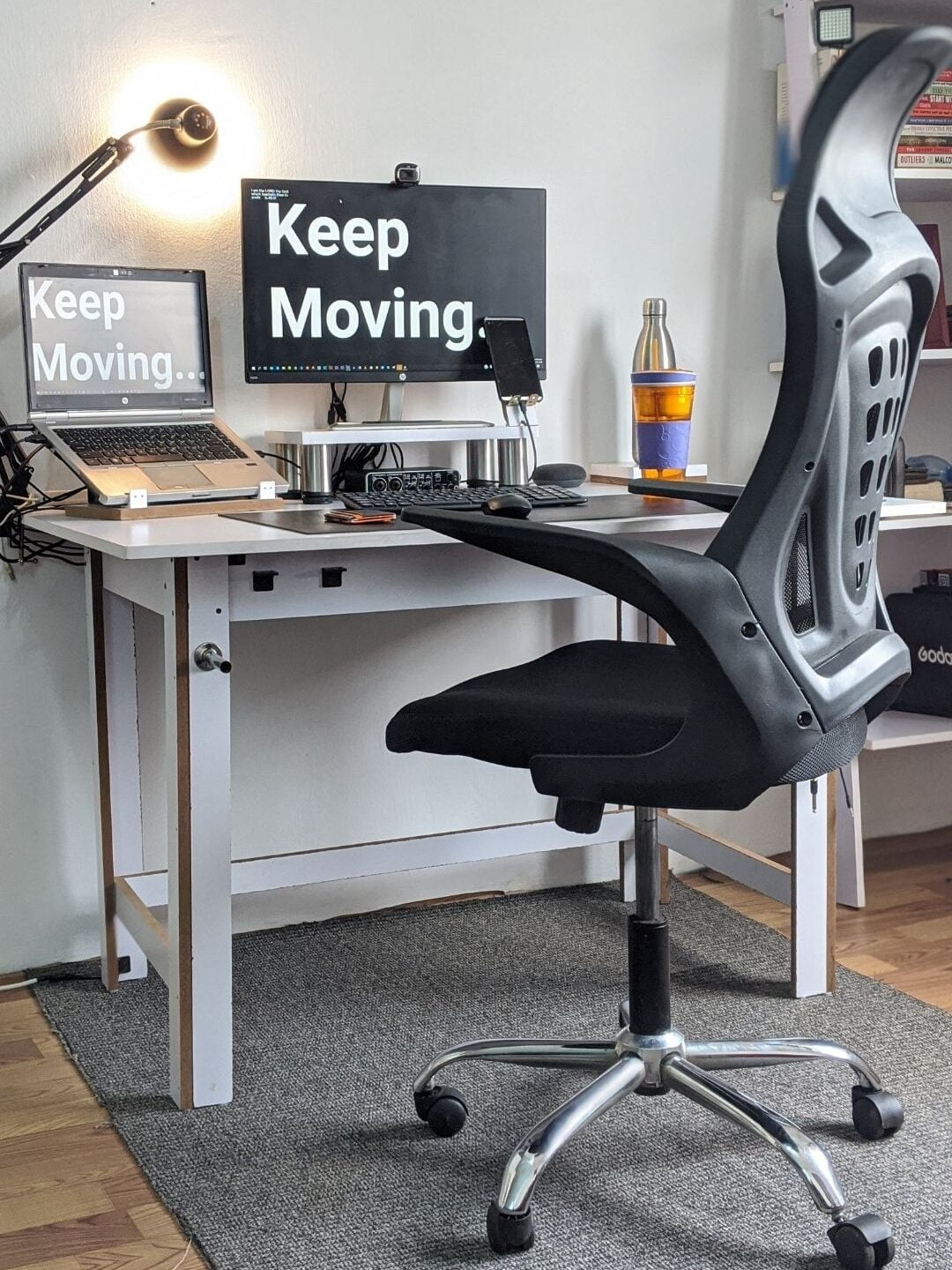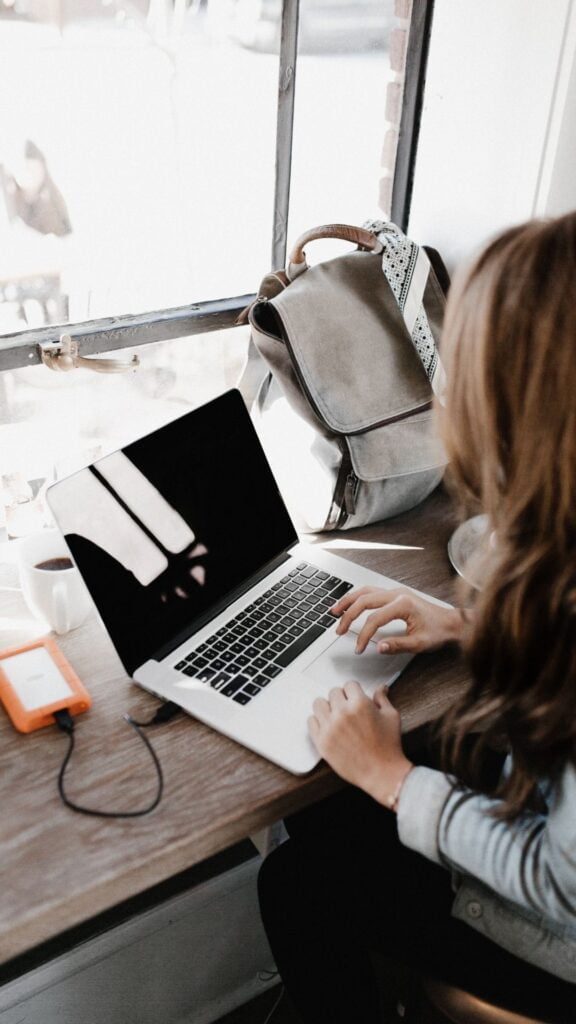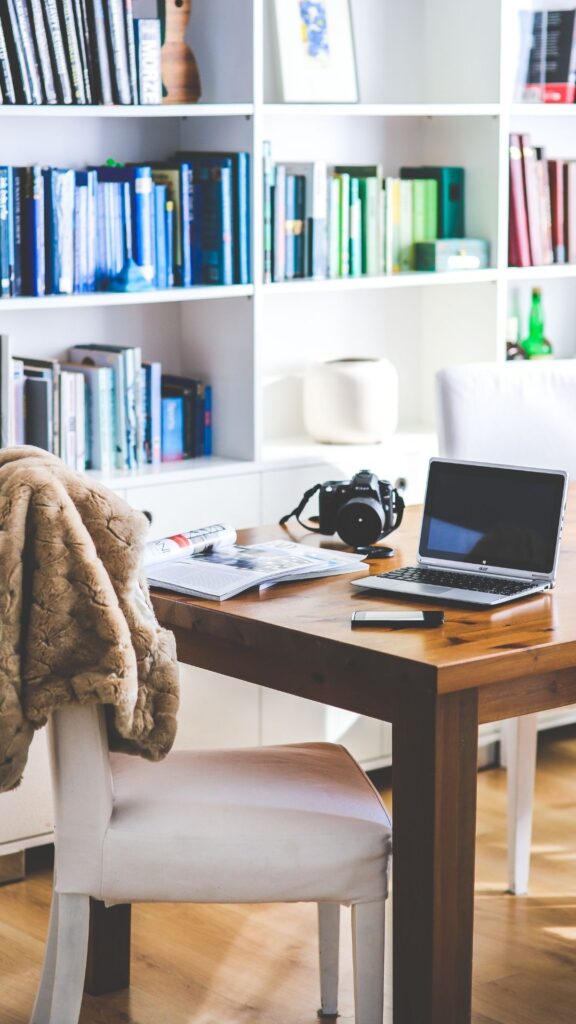- Your cart is empty
- Continue Shopping
6 BEST TIPS TO DESIGN A HOME OFFICE
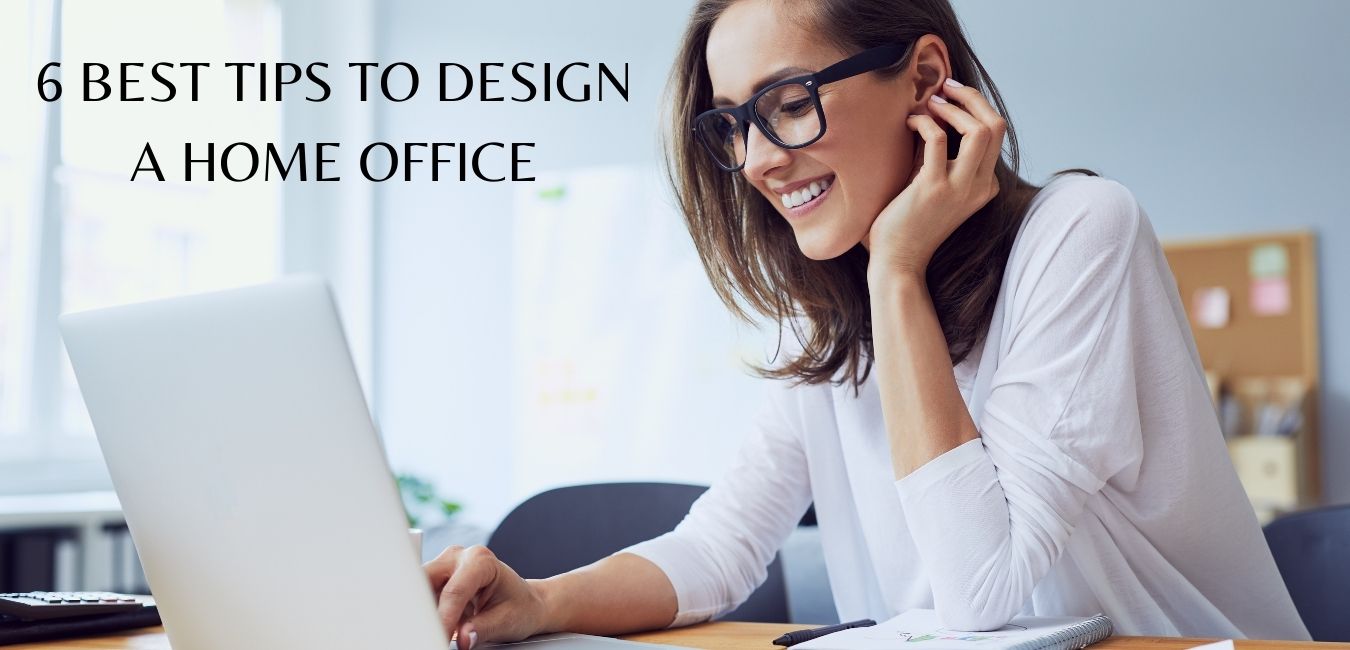
Are you always stuck on what to include in your home office? Read on to know a few tips to design a home office.
Every morning, you just roll out of your bed and just pull your laptop towards you to sit down for work, it obviously is not healthy nor productive. It would probably always result in zero motivation.
A work from home set-up should be conducive to getting work done, and should be an area where you feel inspired, focused, and motivated!
A cognitive scientist, who studies physical & digital environments, Anja Jamrozik says there are five basic things everyone needs to work well
- access to natural light
- a comfortable temperature
- good air quality
- comfortable furniture
- a strategy for minimizing distractions.
If you have space to design a home office in a different room, there are a few tips and tricks which would make it a productive space. A dedicated home office would help you focus more on your office work, and also help you keep aside the household work. It is important to design a home office so that it is comfortable, and an inviting space for you to spend time in and to get your work done efficiently, productively, and with motivation.
Before you start to design a home office, you need to ask yourself a few questions so that you create a perfect home office for yourself.
- Do you really require that unused guest room? Will it be alright for you to convert that room into a home office?
- What will you be doing in the designated office space? Will it be office work that requires you to spend hours in one place in front of the computer? Or will you require a standing ergonomic desk for designing work? Or something else?
- Will your colleagues or clients visit you for work? If yes, then you’ll probably need a home office closer to the front door.
- What equipment would be required?
- Will you spend time on video calls? You’ll need to sort out an appropriate background for your desk.
- What light source is available in the designated office space?
These answers would help you decide, develop and design a home office.
Here are the 6 basic tips to design a home office :
1. EQUIPMENT TO DESIGN A HOME OFFICE
Always design the home office with technological needs in mind. If your desk is in the middle of the room, you’ll need extension wires so that every piece of equipment is properly plugged in. Buy a proper desk lamp that can be positioned so that you are always in light for those inevitable video calls.
You need to factor charging sockets so that you can ensure computers, printers, TV, music systems, phone charging are always plugged in.
Many times, people forget the most important part while creating a home office, and that’s storage. You need a good file cupboard so that you’re not cluttering the office with random papers.
A bookshelf is always a good idea to keep near your back, which has two advantages – One, a good backdrop for the video calls, and two, no cluttering because you’ll inevitably keep the bookshelf organized & clean for the video calls sake.
A noticeboard is also a good option as you can just stick up post-it notes or schedule plans to remind you to be on time.
2. LIGHTING TO DESIGN A HOME OFFICE
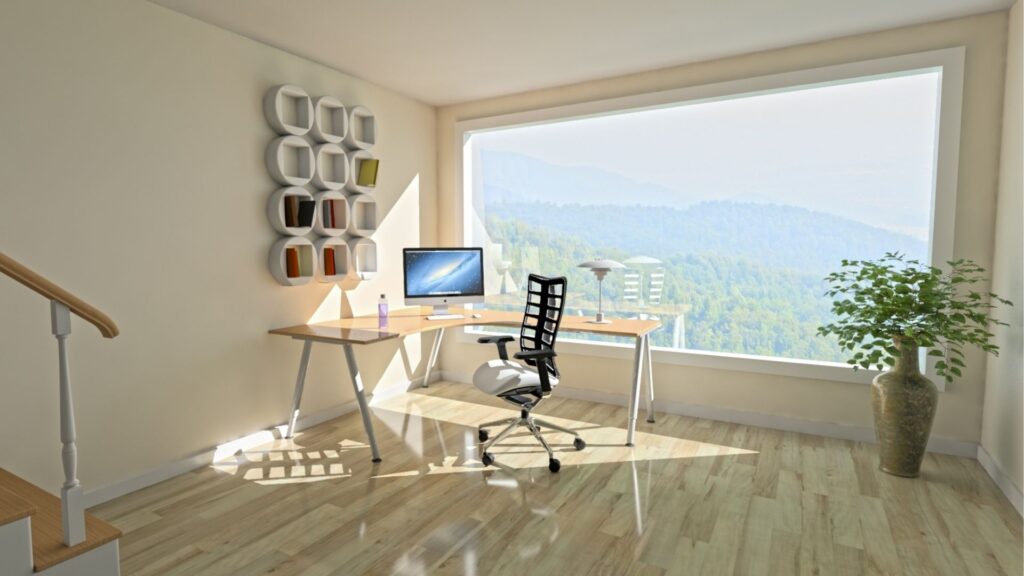
Always factor in natural lighting when you design a home office because the majority of the time you spend in your home office is when it’s light outside. Try and place your desk perpendicular to the window so that the glare of the sunlight is not directly on your computer screen nor do you have to stare into the sunlight directly. Even if you’re not working on the computer all the time, the same principle applies.
A desk light is a good option so that your work is always brightly lit to prevent any eye pressure. A ring light is currently very popular so that you can illuminate your face or work while on video calls.
Avoid placing overhead lighting to avoid glare, also avoid placing your computer screen directly in front of the light source which would lead to eye strain.
Having adjustable light where you can adjust the glare of the lighting is always a good option so that you can adjust it according to the daylight.
3. ERGONOMICS TO DESIGN A HOME OFFICE
You can design your home office to the world’s end but if you place an inappropriate chair or desk, then you’ll end up having back, neck, and shoulder pain – which in turn would just defeat the point of a home office. Therefore, selecting the right chair and desk for you is essential.
Select a chair that has adjustable height and has good back support. Selecting a chair with wheels is just an add-on, but if you’re used to it in your office then it’ll be a good idea to have one in your home office too.
If you’re a designer, then an ergonomic desk would also be a good idea. You can adjust the height of which according to your requirement.
4. PRIVACY TO DESIGN A HOME OFFICE
One can only work efficiently when there is no interruption. Ensure that your home office has good privacy. Investing in some good noise-canceling earphones is also a good idea, it would reduce errors in your work.
Divider walls are a good solution to ensure the privacy and quiet that your work requires.
Adding a degree of white noise with the help of a fan is also a good option for privacy. There are multiple websites that can provide you with white noise music, which can be played on the music system.
Another good idea while you design a home office for privacy is to borrow the ‘Do Not Disturb’ tag idea from your favorite hotels. Just create a tag such as “No disturbance please” or maybe “Quite” and hang it on your office door whenever you’re in the middle of a meeting, or some important work so that your family members know when to approach you and when not to.
5. SUSTAINABILITY TO DESIGN A HOME OFFICE
Keep the planet in mind while designing your home office. Eco-friendly materials can be used to design a home office. Recycling your old equipment can be done by donating it to some needy people rather than just throwing it away.
Consider using eco-friendly materials like glass countertops, or wood desks that are made from sustainable forestry. Try going digital more and more so that you can avoid the usage of paper.
If you have space, you can also invest in solar power so that your electricity consumption is reduced. It would not only make you feel better but also help the planet.
6. LAYOUT TO DESIGN A HOME OFFICE
If you have just a small space for designing the home office, then getting creative is the answer. If you have a small nook under the stairs, or a hallway end, then you can easily convert it into a home office by adding in a desk, a chair, and some partitions.
One important thing to consider while you design a home office is to have a good backdrop because no one can escape a Zoom Call nowadays.
Make the most of the available space. You need not have expensive equipment to make the most of it too, a simple paper cup can be used as a pen holder, or a stapler can be used as a desk weight. Important thing is to have a place for everything so that you’re not disorganized while working.
Your home office need not look like the most boring space in your home, you should and must decorate it so that you are comfortable in it.



